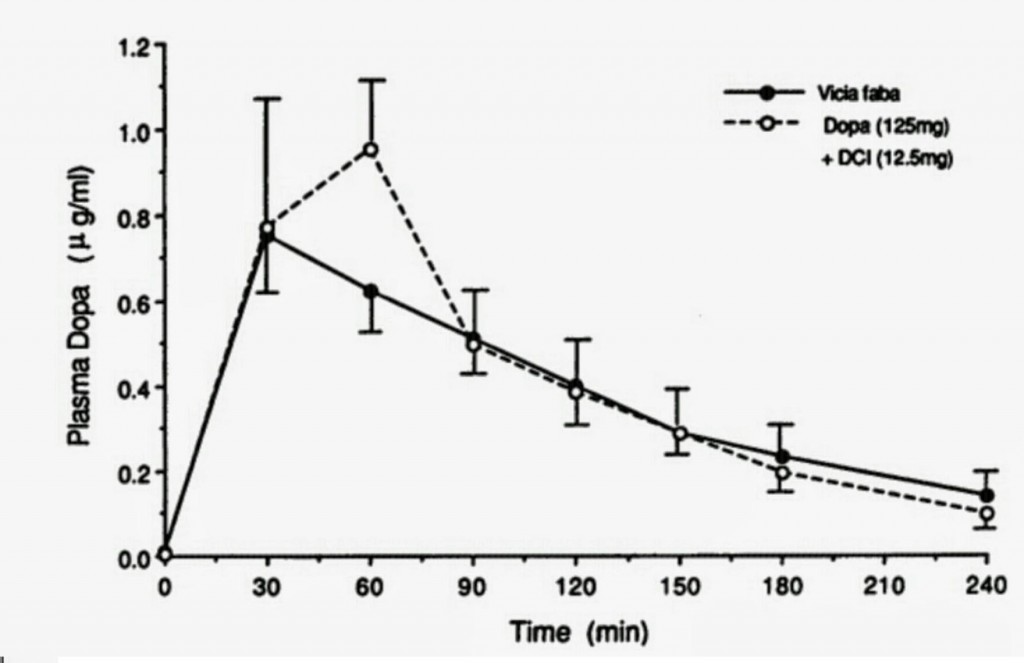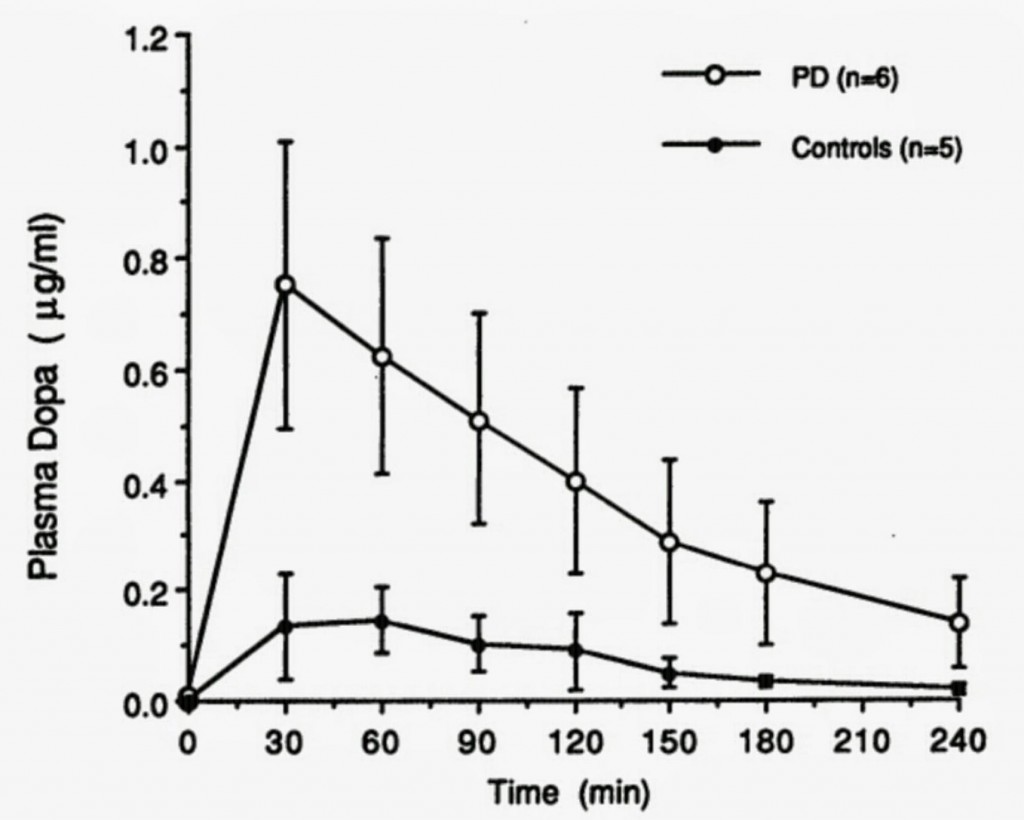Nutritionally the broad bean (Vicia faba), also known as the fava bean, is interesting. Like all legumes the broad bean contains isoflavones, protein, fibre as well as vitamins and minerals (here) and is therefore considered a high quality food. However, of particular interest is the broad beans content of L-dopa (levodopa; dihydroxyphenylalanine), a substance that can be converted to dopamine in humans. This ability to supply the body with dopamine is clinically relevant to those with Parkinson’s disease, where the beans can be used as an adjunct to conventional therapy to increase brain levels of dopamine. In fact eating broad beans increases plasma dopamine levels and improves motor skills in a manner similar to levodopa administration. For example, in a short communication published in the Journal of Neurology, Neurosurgery, and Psychiatry1, researchers fed subjects with Parkinson’s disease fava beans after a 12 hour period with no medication. Of the 6 patients tested, 3 experienced significant clinical improvements in their condition.
The subjects were fed 250 grams of broad beans following a light breakfast. This broad bean meal caused improvements in the clinical symptoms of the 3 patients which mirrored the improvements seen when they received 125 mg of levodopa plus 12.5 mg of carbidopa. Three of the patients who ingested the broad beans developed severe dyskinesias following consumption, but these symptoms also appeared after consumption of the 125 mg of levodopa plus 12.5 mg of carbidopa. These results therefore suggest that consumption of broad beans produces the same clinical changes as administration of conventional Parkinson’s disease medication. The broad bean meal increased plasma levels of levodopa significantly, although not quite to the same level as the medication (figure 1). However, there was no difference between the maximum peak concentrations (Cmax) for broad beans or levodopa. Five healthy controls who ate the beans had rises in plasma levodopa that were lower than the Parkinson’s disease patients (figure 2).

Figure 1. Plasma levodopa concentrations in 6 subjects with parkinson’s disease following braod bean and levodopa medication.

Figure 2. Plasma concentrations of levodopa following ingestion of broad beans in healthy subjects and those with Parkinson’s disease.
Under normal condition the levodopa concentration of the plasma is low. This residual levels of levodopa probably reflects the peripheral conversion of L-tyrosine to levodopa through the catecholamine synthesis pathways. This pathway is tightly regulated by the rate limiting enzyme tyrosine hydroxylase. Tyrosine hydroxylase converts L-tyrosine to levodopa, and its rate limiting effect prevents large increases in plasma or brain concentrations of levodopa. However, broad beans supply levodopa directly, and this bypassess the rate limiting step thus increasing levodopa levels significantly. The discrepancy between the levodopa levels of the patients with Parkinson’s disease and the healthy subjects likely relates to the use of carbidopa in the former. This decarboxylase inhibitor prevent the conversion of levodopa to dopamine in the periphery, allowing more levodopa to enter the brain. This may have resulted in greater conversion of levodopa to dopamine in the healthy subjects, thus lowering levels of levodopa and raising levels of dopamine.
RdB
